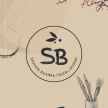Embracing Unity through Islamic Calligraphy: A Tale of Art, Brotherhood, and Cultural Enrichment.
"Ink and Unity: Calligraphy’s Journey Connecting Pakistan and Iran"

In a poignant display of solidarity, Amir Mir, the Provincial Minister for Information & Culture, shared his heartfelt reflections at a recent calligraphy contest hosted by the Iranian Cultural Centre in Lahore. The event not only served as a platform for celebrating the intricate art of Islamic calligraphy but also as a testament to the enduring bond of brotherhood between Pakistan and Iran.
Amir Mir began by unequivocally condemning the recent acts of terrorism in Iran, reiterating Pakistan's steadfast support for its neighboring nation during times of trial and difficulty. This affirmation of solidarity set the tone for an event that went beyond mere artistic expression, delving into the cultural ties that bind these two nations.
At the core of this cultural exchange was the celebration of Islamic calligraphy, which Amir Mir eloquently described as a unique identity for Muslims worldwide. The art form, with its profound connection to religious and cultural heritage, has become a symbol of unity, bridging the geographical and cultural gaps that may exist among diverse Muslim communities.
Amir Mir commended Iran's commitment to preserving this rich heritage, noting with appreciation the Iranian Cultural Centre's efforts to impart calligraphy training to over 200 students annually in Lahore. This dedication to nurturing the younger generation in the art of calligraphy becomes not just a passing of skills but a continuation of a legacy that unites the past, present, and future.
As the calligraphy contest unfolded, Amir Mir marveled at the display of talent and creativity, particularly in the amalgamation of Pakistan-Iran calligraphy styles. The beautiful fusion showcased cultural homogeneity between the two countries, emphasizing their shared values and traditions. The holy verses adorning mosques, shrines, and other sacred places were highlighted as a common heritage, reinforcing the spiritual connection that transcends borders.
Amir Mir emphasized the paramount significance of calligraphy in the broader context of Islamic culture, not just in Pakistan and Iran but across all Islamic nations. He spoke with pride about the global recognition earned by Muslims for their exceptional skills in calligraphic art, with competitions featuring holy verses held around the world.
Turning the spotlight onto Pakistan's own calligraphy tradition, Mir acknowledged luminaries such as Sadequain and Aslam Kamal, whose contributions have left an indelible mark on the global stage. His congratulations to the Iranian Consul General for organizing a splendid calligraphy competition echoed not just appreciation for the event but recognition of the shared artistic spirit that binds the two nations.
Expressing gratitude for the Iranian Consulate General's ongoing initiatives in holding training programs and competitions, Amir Mir envisioned a future where Pakistan and Iran could progress hand in hand, their cultural practices serving as a foundation for stronger ties and mutual understanding on the global stage.
The calligraphy contest became more than a showcase of artistic talent; it evolved into a bridge connecting Pakistan and Iran in their shared appreciation for Islamic calligraphy. Amir Mir's words resonated with the belief that through art and cultural exchanges, nations can forge bonds that withstand the tests of time and adversity. As we celebrate the strokes of calligraphy, we are reminded that unity and brotherhood can flourish, paving the way for a brighter and harmonious future for both Pakistan and Iran.
The intertwining of art, culture, and fraternity, as witnessed in this calligraphy contest, serves as a testament to the enduring strength of diplomatic and cultural ties between nations. As we delve deeper into the significance of Islamic calligraphy, it becomes apparent that this art form goes beyond aesthetics; it is a powerful medium for cultural enrichment and understanding. In exploring the nuances of the event, we uncover a narrative of shared history, mutual respect, and a collective commitment to preserving the cultural fabric that unites Muslim communities across the globe.
Amir Mir the strokes of calligraphy, there is a resounding message of unity and shared identity. The fusion of Pakistan-Iran calligraphy styles not only reflects the artistic prowess of the participants but also symbolizes the harmonious coexistence of cultural influences. The holy verses, meticulously engraved on the doors and walls of mosques and shrines, stand as a living testament to the common heritage that binds these nations. It is in these shared spiritual and cultural symbols that we find a language that transcends linguistic and geographic boundaries.
Amir Mir's acknowledgment of Iran's role in passing on this rich heritage to younger generations highlights the importance of cultural preservation. The Iranian Cultural Centre's dedication to training over 200 students each year in Lahore is not merely an educational initiative; it is a commitment to ensuring that the flame of artistic expression continues to burn brightly in the hearts and hands of future generations. Through such initiatives, nations contribute to the tapestry of global culture, fostering an appreciation for diversity and strengthening the bonds that tie humanity together .
The global recognition earned by Muslims in the field of calligraphic art, as emphasized by Amir Mir, is a source of collective pride. The competitions featuring holy verses held worldwide not only showcase individual talents but also serve as platforms for cultural exchange. These events become melting pots where diverse calligraphic styles converge, creating a rich mosaic that mirrors the pluralistic nature of the Muslim world.
As we delve into Pakistan's own calligraphy tradition, the names of Sadequain and Aslam Kamal emerge as beacons of artistic excellence. Their contributions have not only shaped the artistic landscape of Pakistan but have reverberated across borders, leaving an indelible mark on the global stage. The acknowledgment of these luminaries serves as a reminder that art, in its various forms, has the power to transcend boundaries and leave a lasting legacy.
In extending his congratulations to the Iranian Consul General for organizing the calligraphy competition, Amir Mir underscores the significance of such events in fostering cultural ties. The act of coming together, not just to compete but to appreciate and celebrate each other's artistic expressions, creates an atmosphere where diplomatic and cultural relations can thrive. The shared artistic spirit becomes a bridge that connects hearts and minds, paving the way for deeper understanding and cooperation.
The ongoing initiatives of the Iranian Consulate General in holding training programs and competitions receive gratitude from Amir Mir, signifying the importance of continued cultural exchange. In envisioning a future where Pakistan and Iran progress hand in hand, he articulates a vision of mutual growth and collaboration. It is in the embrace of splendid cultural traditions that nations find the strength to overcome challenges and chart a course towards a brighter future.
In conclusion, the calligraphy contest becomes a microcosm of the broader narrative of unity, brotherhood, and cultural enrichment between Pakistan and Iran. As we explore the layers of significance within this event, we uncover a story of shared heritage, artistic brilliance, and a commitment to preserving the cultural tapestry that defines Muslim identity. The strokes of calligraphy, whether on competition grounds or engraved on sacred spaces, serve as a testament to the enduring strength of cultural bonds. Through art and cultural exchange, nations have the opportunity to build bridges that transcend differences, fostering a world where diversity is celebrated, and unity prevails.
Disclaimer: The following content has been automatically generated by an AI system and should be used for informational purposes only. We cannot guarantee the accuracy, completeness, or timeliness of the information provided. Any actions taken based on this content are at your own risk. We recommend seeking qualified expertise or conducting further research to validate and supplement the information provided






Comments (1)
Great job! fantastic work